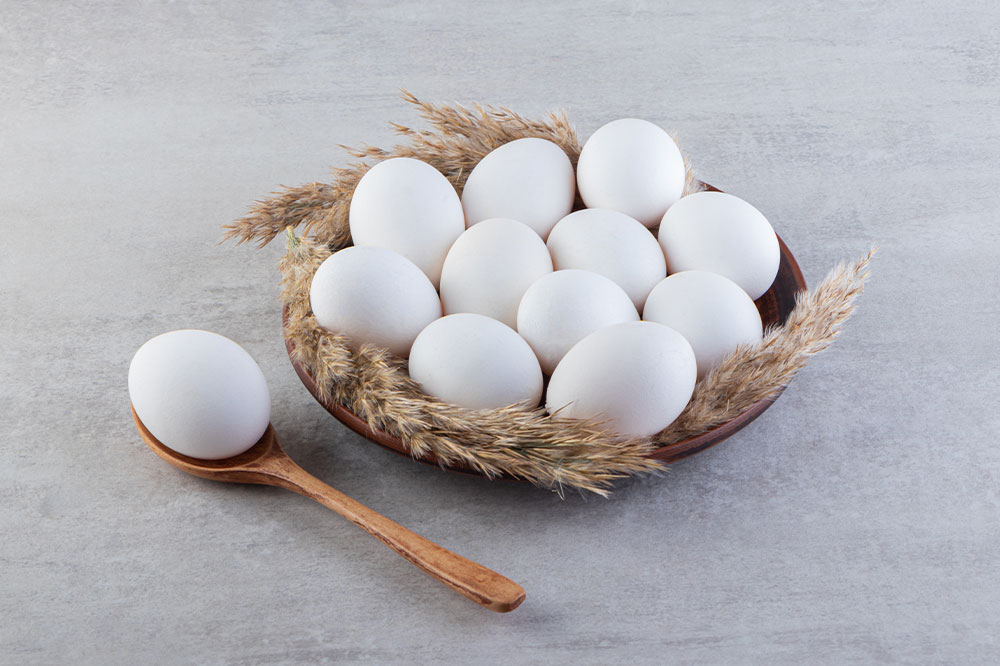
9 Protein-rich Foods to Manage ADHD Symptoms
Attention deficit hyperactivity disorder, or ADHD, is usually first diagnosed in childhood and can last into adulthood. It is also one of the most common neurodevelopmental disorders that start at a young age. Children with the condition may have trouble controlling impulsive behaviors and staying focused. Healthcare experts may indicate a combination of prescriptions and therapies to manage ADHD. Likewise, a healthy meal plan rich in proteins may help manage the condition.
Benefits of protein for ADHD management
A healthcare professional may recommend a protein-rich meal plan for ADHD for several reasons. These foods help make neurotransmitters, chemicals in brain cells, to communicate with each other. Moreover, protein is also known to prevent spikes in blood sugar, which usually increases hyperactivity and impulsivity, especially in people with ADHD. Therefore, following a meal plan rich in proteins will help keep an individual’s energy and blood sugar levels stable and help improve concentration.
Protein-rich foods
There are several foods rich in protein, but these are some of the most nutritious options beneficial for those with ADHD.
Eggs
Foods like eggs are a rich source of protein that most people enjoy during breakfast. It could also be enjoyed at other times of the day. To get the maximum protein from eggs without saturated fat, cook them in small amounts of unsaturated fats like olive oil. They could also boil or poach the food.
Salmon
Studies show that a small serving of salmon (100 grams) can provide about 25 grams of protein to the body. Therefore, including fish in meal plans may significantly benefit those living with ADHD. To enjoy the fish without losing its nutritional value, one could make grilled salmon with avocado sauce, bake a herb-crusted version with veggies, or combine it with hard-boiled eggs, lettuce, tomatoes, and avocados to make a Cobb salad. Other protein-rich sources like salmon include cod, haddock, grouper, halibut, bass, and tilapia.
Chicken
Poultry products like chicken, especially chicken breast, have the highest protein levels, making it beneficial for people with ADHD. The food may render maximum benefits when an individual bakes it in the oven. Another way to enjoy a healthy serving of chicken is to stir-fry it with other healthy vegetables. Apart from chicken, one could also include turkey breasts in their meal regime. The food contains about 30 grams of proteins for every 100-gram serving. One could also remove the skin before and/or after cooking to reduce the fats derived from the foods.
Lean beef
Adding beef to meals may help improve and manage symptoms of ADHD. Lean cuts are those with less than 10 grams of total fat and nothing more than 4 grams of saturated fat per 3.5-ounce cooked serving. Healthy lean beef options are usually labeled “loin” and “round.” Beef sirloin and 95% lean ground beef are some of the healthiest sources of lean meats. Furthermore, such beef products also contain other essential nutrients for the body, such as B vitamins, selenium, and zinc.
Pork
The protein content of lean, cooked pork is about 26%. But when it is dry, the composition could be as high as 89%, which makes the meat one of the healthiest protein sources for individuals with ADHD. Moreover, pork contains essential amino acids the body requires for growth and maintenance. To ensure maximum protein benefit is derived from pork, one should grill, roast, bake, or broil the lean meat instead of frying it. Furthermore, avoid fat-heavy options like bacon. In addition, undercooked or raw pork should also be avoided as this may lead to the development of parasitic infections, including tapeworm in the intestines.
Plain Greek yogurt
A 170-gram serving of Greek yogurt contains about 15-20 grams of protein. The additional content of complex molecules is produced when the dairy product is strained to remove the liquid, which renders a thicker, creamier, more concentrated texture. One should pick plain, non-fat Greek yogurt to reduce calories and fat. Moreover, opting for this option will also help one avoid artificial sweeteners that may lead to health complications. Instead, one can add healthy fruits to the yogurt and blend them into a healthy smoothie.
Almonds
A quarter-cup serving of almonds could nourish the body with about 7 grams of protein. And munching on them after meals throughout the day could significantly help lower blood sugar levels and keep ADHD symptoms in check. Apart from this, almonds are rich in antioxidants, which are known to manage heart diseases, aging, and certain cancers triggered by free radicals formed due to oxidative stress. Apart from almonds, one could also eat other nuts like walnuts, pistachios, cashews, and Brazil nuts to improve protein levels.
Dry beans
Pulses like dry beans may offer about 8 grams of protein for every half a cup of cooked serving. The food is also low in fat and high in fiber. The fiber content can help one feel full after a meal and also contribute to lower cholesterol levels. While dry beans are relatively lower in essential amino acids, which are the building blocks of protein in the body, eating them with other protein sources throughout the day could compensate for the gap.
Cottage cheese
Dairy products like low-fat cottage cheese are relatively high in proteins. An individual who adds a cup of this cheese to meals can receive about 28 grams of the daily value of protein. To enjoy a healthy serving of cottage cheese, one can add this item to morning smoothies or top it with fresh berries, mango, or pineapple for a healthy snack. Replacing cottage cheese for mayo in chicken and egg salads or using it instead of butter on toast is also a nutritious and healthy way to enjoy the food when managing ADHD.


